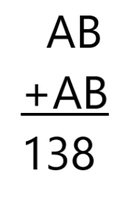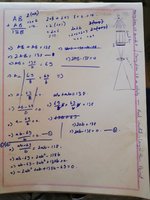Ok i dont know if my equation makes sense or not as im touching algebra after a long time so Im facing problems with this simplification. Please help.
=> -2ab^2 + ab + 138b - 69 = 0
I got stuck here.
The equation started like this...
ab + ab = 138, find A. ?
=> -2ab^2 + ab + 138b - 69 = 0
I got stuck here.
The equation started like this...
ab + ab = 138, find A. ?


